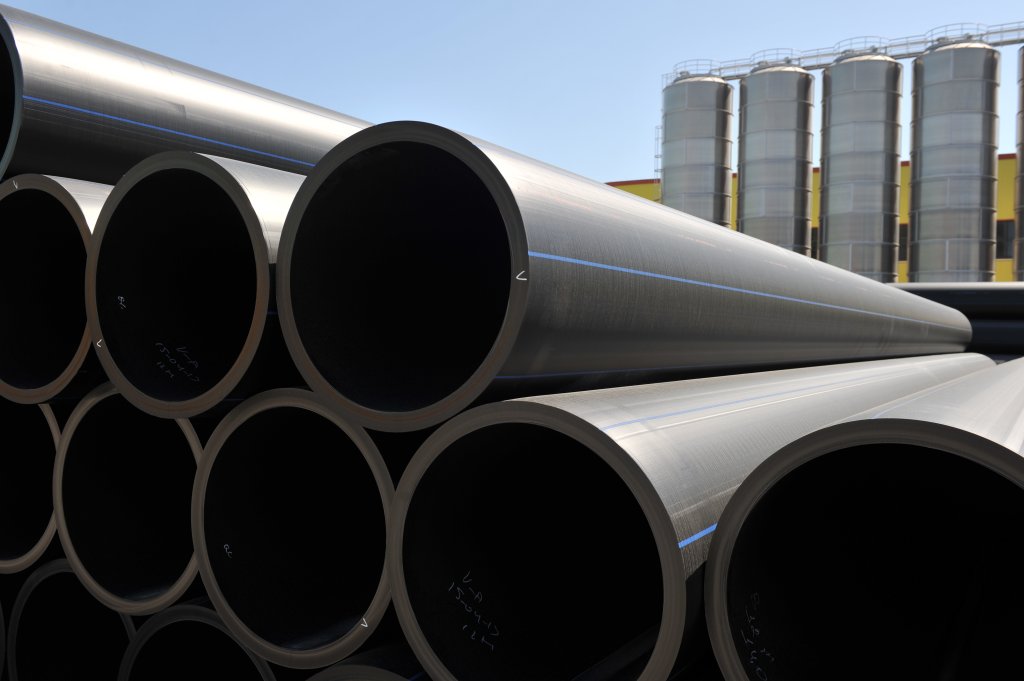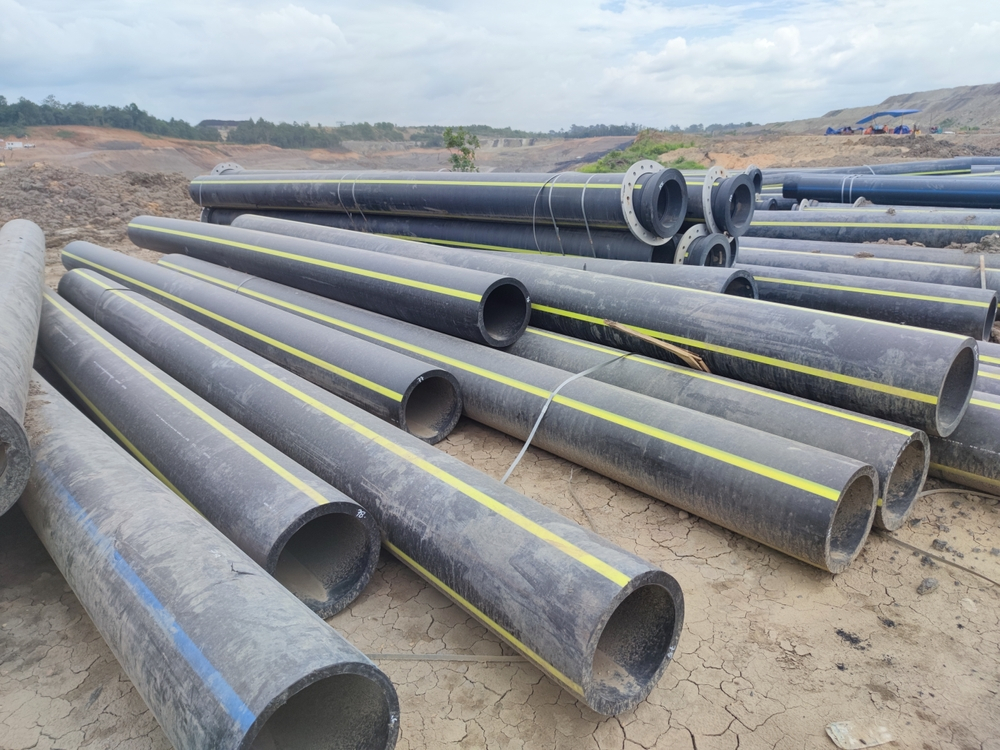Pipe Manufacturing Midland TX: From Raw Material to Finished Pipe
Wiki Article
Check Out the Manufacturing Process Behind High-Quality HDPE Pipeline and Its Applications
The production procedure of top notch HDPE pipelines is elaborate and systematic. It starts with the selection of raw materials that improve efficiency. Following this, ethylene undertakes polymerization to create resin, which is after that shaped with extrusion. Quality assurance is vital, ensuring that the final product satisfies rigorous standards. Nonetheless, the journey of HDPE pipelines doesn't end with production. Their applications across different sectors disclose a wider importance worth analyzing.Understanding HDPE: Characteristics and Advantages

High-density polyethylene (HDPE) is a flexible polycarbonate recognized for its sturdiness and resistance to numerous environmental aspects. This material exhibits outstanding tensile toughness, making it suitable for demanding applications. Its low-density structure adds to a lightweight item, assisting in simplicity of dealing with and setup. HDPE additionally showcases impressive resistance to chemicals, which decreases degradation when exposed to extreme materials.
The material's low wetness absorption further improves its durability, making it ideal for use in pipes and storage containers. Additionally, HDPE is immune to ultraviolet (UV) radiation, guaranteeing that items preserve their honesty also when exposed to sunshine. Its flexibility allows for the development of detailed shapes without endangering toughness. The environmentally friendly nature of HDPE, frequently originated from recycled materials, adds to its allure, promoting lasting techniques in manufacturing. On the whole, these homes and advantages make HDPE a favored option for various commercial and customer applications.
Basic Material Option for HDPE Production
The option of resources for HDPE manufacturing is necessary to validate the end product fulfills the wanted specs and quality requirements. High-density polyethylene (HDPE) is primarily produced from polymerized ethylene, acquired from fossil gas such as gas or petroleum. The quality of these feedstocks substantially influences the mechanical and thermal buildings of the last HDPE.Additives additionally play a considerable role in improving HDPE's efficiency, consisting of anti-oxidants, UV stabilizers, and colorants, which boost longevity and resistance to ecological aspects. The choice process must consider not just the chemical structure of the raw materials yet additionally their processing attributes to assure effective production.
Additionally, the sourcing of resources must focus on sustainability and compliance with environmental regulations, as responsible techniques are crucial in today's market. Eventually, cautious raw product selection lays the foundation for generating top quality HDPE pipes suitable for diverse applications.
The Extrusion Process: Forming HDPE Pipeline
The extrusion process plays a vital function in forming HDPE pipes, beginning with careful product prep work methods that guarantee perfect flow and consistency. Just as vital is the layout of the die, which straight influences the last measurements and surface area top quality of the pipe. With each other, these variables contribute significantly to the performance and high quality of HDPE pipe manufacturing.Material Preparation Techniques
Reliable manufacturing of HDPE pipelines begins with thorough material preparation strategies, specifically the extrusion process. During this phase, high-density polyethylene resin is first dried out to remove dampness, making certain optimal circulation features. The material is then fed into the extruder, where it undergoes heating and melting, transforming into a viscous state. This home heating procedure is thoroughly regulated to keep the material's integrity and performance. The molten HDPE is required through a die, shaping it into a constant pipeline form. Proper temperature monitoring throughout extrusion is crucial, as it directly influences the product's homes and the end product quality. As soon as formed, the HDPE pipe is cooled down and cut to defined sizes, all set for succeeding processing and applications.Die Layout Importance
Precision in die design plays a necessary function in the extrusion process of HDPE pipelines. The die acts as the last shaping device, directly affecting the pipe's measurements, wall density, and surface area finish. A well-designed die guarantees uniform product circulation, minimizing issues such as irregularities and weak spots. The geometry of the die must be enhanced to accommodate the details residential properties of HDPE, including its viscosity and thermal actions throughout extrusion. Furthermore, the cooling price of the material as it passes via the die can considerably influence the pipe's architectural integrity. As a result, purchasing sophisticated die modern technology is vital for makers aiming to produce premium HDPE pipes that satisfy industry requirements and client expectations.Quality Assurance Measures in HDPE Production
Numerous aspects affect the quality of HDPE pipeline production, reliable high quality control actions are essential to assure uniformity and integrity in the final product (hdpe pipe fittings Midland TX). Secret high quality control practices consist of strenuous material inspection, confirming that the raw polyethylene satisfies well-known requirements for pureness and density. During the extrusion process, specifications such as temperature level, pressure, and cooling time are closely monitored to keep dimensional accuracy and architectural integrityAdditionally, post-production screening is crucial; manufacturers commonly conduct hydrostatic tests to evaluate the pipe's strength and resistance to pressure. Visual examinations for surface problems further enhance top quality guarantee. Certification from appropriate criteria organizations, like ASTM or ISO, provides an additional layer of reputation. By executing these comprehensive top quality control steps, makers can minimize problems, boost efficiency, and make sure that the HDPE pipes meet the certain demands of various applications, ultimately bring about client fulfillment and trust fund in the product.
Applications of HDPE Pipeline Throughout Industries
HDPE pipes are utilized across different markets due to their sturdiness and convenience. In water distribution systems, they guarantee efficient shipment, while in wastewater monitoring, they supply reputable services for waste transport. Additionally, farming watering networks take advantage of HDPE's resistance to rust and versatility, making it a suitable choice for contemporary farming methods.
Water Circulation Equipments
A substantial number of sectors rely upon high-density polyethylene (HDPE) pipelines for efficient water circulation systems. Understood for their toughness and resistance to deterioration, HDPE pipelines are commonly made use of in metropolitan water networks, agricultural watering, and industrial applications. Their lightweight nature promotes very easy handling and installation, decreasing labor costs and time. Furthermore, American Plastics HDPE Pipe for Oilfield HDPE pipes can accommodate different pressure levels, making them ideal for both low and high-pressure systems. Pipe Supplier American Plastics Midland. The versatility of the material enables seamless combination right into existing framework, decreasing the demand for extensive excavation. In addition, HDPE's resistance to chemical leaching warranties that the water supplied remains secure and tidy, making it an optimal choice for preserving the top quality of safe and clean water throughout numerous marketsWastewater Monitoring Solutions
Efficient water distribution systems additionally lead the way for innovative wastewater administration services, where high-density polyethylene (HDPE) pipelines play a significant function. Distinguished for their toughness and resistance to rust, HDPE pipes are excellent for moving wastewater in numerous setups. Their adaptability enables simple installation in intricate settings, minimizing the need for comprehensive excavation. Furthermore, HDPE's smooth indoor surface reduces rubbing, improving flow prices and efficiency. These pipelines are also immune to chemical leaching, making certain that pollutants do not endanger the surrounding setting. Industries, municipalities, and therapy facilities significantly count on HDPE pipes for their reliability and durability, making them a recommended selection for contemporary wastewater management systems. This flexibility emphasizes the essential importance of HDPE pipes across various applications.Agricultural Watering Networks
Agricultural irrigation networks profit significantly from the use of high-density polyethylene (HDPE) pipelines, which offer efficient and trustworthy water shipment to crops. HDPE pipes are light-weight, making them easy to transport and set up, while their adaptability permits various configurations in varied surfaces. These pipes demonstrate outstanding resistance to corrosion, chemicals, and UV radiation, making sure sturdiness in rough agricultural environments. Furthermore, their smooth indoor surface area reduces rubbing loss, maximizing water circulation and lowering energy costs connected with pumping. The long life of HDPE pipes, usually exceeding 50 years, contributes to reduce maintenance and replacement costs. Farmers increasingly rely on HDPE pipelines to boost watering efficiency and promote lasting farming techniques, ultimately leading to boosted crop returns and source preservation.
Future Trends in HDPE Pipeline Technology
As the need for sustainable and effective facilities expands, innovations in HDPE pipeline technology are poised to transform different sectors. Arising fads consist of the assimilation of smart technologies, such as sensors and IoT abilities, which assist in real-time tracking of pipe conditions, decreasing maintenance costs and stopping leaks. Furthermore, the growth of sophisticated manufacturing strategies, such as 3D printing, is allowing the production of complicated, personalized pipe designs that cater to specific job requirements.The focus on recycling and circular economy methods is driving the innovation of HDPE pipelines made from recycled products, enhancing sustainability. Enhanced jointing methods, such as electro-fusion and mechanical installations, are likewise improving setup efficiency and reliability. Finally, the expanding emphasis on ecological policies is pressing suppliers to embrace greener production procedures, guaranteeing that HDPE pipes not just meet market standards however also promote a more lasting future for infrastructure growth.
Frequently Asked Concerns
How Does HDPE Compare to Various Other Plastic Products?
HDPE outshines lots of various other plastic materials relating to resilience, chemical resistance, and flexibility. Its low thickness and high tensile stamina make it excellent for various applications, commonly going beyond alternatives in both efficiency and long life.What Are the Ecological Influences of HDPE Production?
The environmental impacts of HDPE production include greenhouse gas discharges, power usage, and possible air pollution from manufacturing procedures. Additionally, improper disposal can lead to soil and water contamination, elevating concerns about long-term eco-friendly effects.Can HDPE Water Lines Be Reused?
Yes, HDPE pipelines can be reused. Lots of centers approve utilized HDPE for processing, changing it into new products. This recycling adds to sustainability initiatives, lowering plastic waste while preserving resources and energy in the production cycle.What Is the Life-span of HDPE Piping?

How Do Temperature Level Variants Impact HDPE Pipe Performance?
Temperature variants greatly impact HDPE pipeline performance, affecting flexibility and toughness. High temperature levels can lead to softening, while low temperatures may trigger brittleness, eventually affecting the pipeline's sturdiness and suitability for various applications in varied settings.Report this wiki page